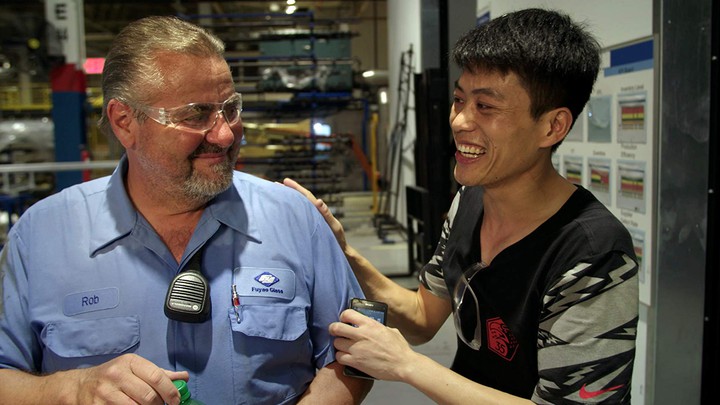When Julia Reichert, one of the producers and directors of “American Factory,” accepted her Oscar for Best Documentary Feature Film, she had a clear message to share: “Working people have it harder and harder these days. We believe that things will get better when workers of the world unite.”
“American Factory” is set in Dayton, Ohio and tells the story of a Chinese automotive glass factory opening in a plant previously used by General Motors. Cultures collided and emotions were heightened when Fuyao Glass America hired locals, many of whom worked at the old GM plant, to work alongside Chinese employees.
Many of the American workers initially felt immense relief to have a job after a long stint of unemployment. However, that relief soon turned to frustration, as the culture of the Chinese management was unfamiliar to American workers, and many of them were paid much lower wages than they were accustomed to.
Chinese workers attended seminars on how to acclimate to America and their American co-workers, but many were confused by the Americans’ comparatively low productivity, and the need to be reassured and praised.
Many of the scenes contain awkward humor reminiscent of the show “The Office,” like when a plane of glass shattered at the same time a supervisor emphasized the product’s quality to their customers, or when American employee Rob invited his new Chinese co-workers over for Thanksgiving and they eagerly took rides on his motorcycle and tried out his pistol in the backyard.
The company’s contrasting cultures caused some workers to clash, but others found kindred spirits in their Chinese counterparts.
“Wong and I have spent a lot of time together, with him teaching me everything,” Rob said of Wong, a Chinese furnace engineer. “We’ve just bonded, and we’ve tried to learn each other’s culture.”
Later in the film, Rob goes so far as to call Wong his Chinese brother: “I would have his back, just like I’d have one of my own brothers.”
The main conflict in the documentary is the question of whether or not the factory workers will form a union. Chairman Cao, founder and Fuyao CEO, even hired an anti-union consulting firm to squash any potential union activity in his factory.
Since management was more interested in maximum output rather than Occupational Safety and Health Administration compliance, the American employees raised concerns over unsafe working conditions. On a trip to visit a Fuyao plant in China, a few American workers were horrified to see Chinese workers sorting through broken glass for hours, wearing nothing but thin gloves.
As the documentary continues, the plant’s most outspoken union supporters are fired, with low productivity given as the reason. One of the fired workers said they believed the loss of their job was an act of retaliation from a company that refuses to be unionized, and since Ohio is an at-will employment state, there was not much the workers could do. The filmmakers do well in showcasing both pro-union and anti-union perspectives, although it definitely portrays the union supporters who lost their jobs in a sympathetic light.
Dave Burrows was vice president of Fuyao Glass America at the start of the film, but was soon replaced after the company failed to turn a profit. He had one of the biggest shifts in perspective when it comes to unions.
At the plant’s opening ceremony, Sen. Sherrod Brown voiced his support for unions, which angered Burrows.
“I’m going to have to kill a senator,” Burrows said half-jokingly. “I’m going to take those big scissors and cut Sen. Brown’s head.”
Later in the film, after losing his job, Burrows expressed his change of heart.
At the end of the film, Fuyao introduces automation to the factory floor. A mechanical arm took over the job of two people, hinting at the dramatic change to come. Ultimately, factories are no longer run by human hands, and automation doesn’t discriminate. Whether American or Chinese, pro-union or anti-union, automation is on its way to eliminate jobs once held by people. As a bottom line, those who own the factories only care about their financial profit.
The film concludes on a tense reminder that as technology continues to advance, human jobs will be taken over by machines. “American Factory” offers no easy answers, because there are no easy answers. Instead, the documentary shows a glimpse into the beginning of the end: The twilight years of what manufacturing once was in America.


